The global environment is now facing unprecedented crises such as global warming, extreme weather, and biodiversity loss.
At the root of these problems is the “environmental burden” caused by our human activities.
This article will explain the types of environmental impacts, their specific effects, and what each of us can do to help.
INDEX
History and Current State of Environmental Burden
Since the Industrial Revolution, mankind has built a mass-production, mass-consumption, mass-disposal type society.
Soot and fumes from factories, automobile exhaust, and chemical runoff have increased along with economic development.
In the 1950s and 1960s, Japan experienced serious pollution problems.
Minamata disease, Yokkaichi asthma, Itai-itai disease, and other environmental pollution brought about by industrialization caused many health problems.
Today, environmental burden is a serious problem on a global scale.
Our daily lives and economic activities are placing a burden on the environment in various ways, such as abnormal weather and sea level rise due to global warming, health hazards caused by air and water pollution, waste problems, and loss of biodiversity.
Types and Impacts of Environmental Impacts
Environmental impacts can be broadly categorized into the following types, each of which has serious effects.
1. Global warming
Emissions of carbon dioxide and other greenhouse gases are increasing the average global temperature.
The resulting effects include melting glaciers, rising sea levels, and more frequent extreme weather events.
Typhoon No. 21 in 2018 recorded a maximum instantaneous wind speed of 58.1 m/s in Osaka Bay, flooding Kansai International Airport and damaging many houses.
The intensification of abnormal weather in recent years is believed to be the result of global warming.
2. Air Pollution

Nitrogen oxides and sulfur oxides emitted from factories and automobiles contribute to air pollution; particles as small as 2.5 micrometers in diameter, such as PM2.5 (fine particulate matter), are known to increase the risk of asthma and lung cancer.
Air pollution is a serious problem in China’s large cities due to rapid industrialization.
In January 2013, Beijing recorded a “dangerous” level of PM2.5 concentrations exceeding 900 μg/m³.
3. Water Pollution
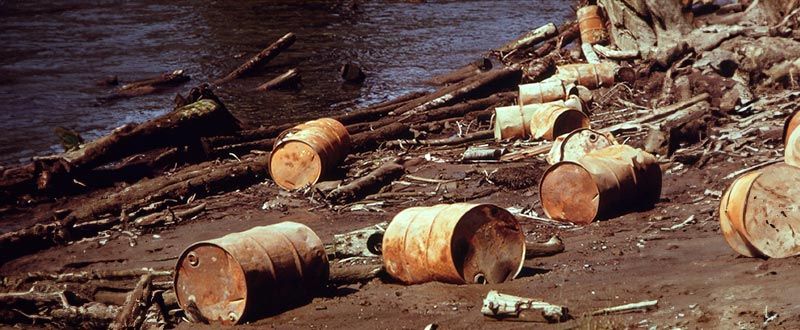
Factory effluent, domestic wastewater, and pesticide runoff cause water pollution in rivers and oceans. Eutrophication caused by organic matter generates “red tides” and “blue tides” that lead to abnormal proliferation of plankton, resulting in mass mortality of fish and shellfish.
In Bangladesh, wastewater from leather factories has seriously polluted rivers near the capital city of Dhaka. High concentrations of chromium and other heavy metals have been detected, and there are concerns about the health hazards to nearby residents.
4. Soil pollution
Illegal dumping of toxic substances and excessive use of pesticides cause soil contamination. Soil contamination by heavy metals such as cadmium and lead contaminate crops and threaten food safety.
In the Jinzu River basin in Toyama Prefecture, Japan, there used to be many cases of “itai-itai disease” caused by cadmium contamination. Many residents suffered from osteomalacia due to cadmium contamination of soil and rivers.
5. Loss of biodiversity

The destruction of the natural environment due to development and pollution has deprived habitats for many living organisms, threatening them with extinction.
Our survival depends on a wide variety of ecosystem services, and the loss of biodiversity is shaking the foundations of these services.
According to the World Wildlife Fund’s (WWF) Living Planet Report 2020, vertebrate populations have declined by an average of 68% over the past 50 years.

6. WASTE PROBLEMS

Our mass-consuming society produces enormous amounts of waste.
Plastic waste is one of the main causes of marine pollution. Marine life can accidentally ingest plastic, leading to health problems and death.
Some predict that by 2050, the amount of plastic in the ocean will exceed the amount of fish.
Marine plastic pollution can have long-term effects on ecosystems and human health.
Efforts to Reduce Environmental Impact
Efforts by the International Community
The United Nations has set “Responsibility to Create Responsibility to Produce” as one of the Sustainable Development Goals (SDGs), aiming to ensure sustainable production and consumption patterns.
The Paris Agreement, adopted in 2015, aims to pursue efforts to keep the global average temperature increase well below 2°C above pre-industrial levels and limit it to 1.5°C.
National and Local Government Initiatives
Japan has declared itself “carbon neutral by 2050” to achieve virtually zero greenhouse gas emissions by 2050. Efforts include expanding the introduction of renewable energy and promoting the use of electric vehicles.

The Tokyo Metropolitan Government introduced a cap-and-trade system in 2010 that requires large business establishments to reduce their CO2 emissions.
This system has successfully reduced CO2 emissions by 27% at eligible business sites by 2019.

Corporate Initiatives
Toyota Motor Corporation has announced its goal of 100% electric vehicles in new car sales globally by 2050.
Nissan, Honda, Suzuki, and others are also focusing on expanding sales of electric vehicles.
Fast Retailing, which operates the UNIQLO brand, has announced a policy to switch all materials used to recycled or sustainable materials by 2030.
By 2020, the use of recycled materials will have risen to about 30%.
Education and Citizenship
The Ministry of the Environment provides opportunities for children to engage in proactive environmental activities in their communities through the “Children’s Eco-Club.” By 2020, approximately 250,000 children nationwide had participated in the program.
Environmental NPOs in various regions are engaged in a variety of activities such as beach cleanups, forest conservation, and environmental education.
These grassroots activities play a major role in raising environmental awareness.
What each of us can do
Each of us has an important role to play in reducing our environmental impact. Below are three actions you can start taking today. 1.
Reduce electricity consumption by frequently unplugging unused devices when you leave a room or when you are not using them. 2. Reduce plastic waste by using your own bags or eco-bags instead of plastic bags. 3. Reduce food leftovers Food loss amounts to about 1.3 billion tons per year worldwide. Reduce food leftovers by being careful not to overbuy or overcook food.
Use eco-bags! Use eco-bags
There are many other things we can do, such as saving water, using public transportation, and choosing environmentally friendly products.
Each person’s small action has the power to make a big difference.
Tips for a greener lifestyle
In order to practice a lifestyle that reduces environmental impact, it is important to take conscious action in our daily lives. Following are some tips for living an environmentally friendly lifestyle.
1. Reduce energy consumption.
- Choose energy-efficient appliances
- Turn off lights in unused rooms.
- Adjust air conditioning and heating temperature settings appropriately
- Take public transportation, bike, or walk.
2. Reduce waste
- Reuse and recycle.
- Avoid excessive packaging and choose products with simple packaging.
- Choose reusable products instead of disposable products.
- To reduce food loss, buy only what you need and use it up.
3.Conserve water resources
- Use water-saving showerheads and panels.
- Wash clothes in batches.
- Wipe dishes before washing them.
- Water the garden in the morning and evening when it is cooler.
4. Choose environmentally friendly products.
- Choose organic products and pesticide-free vegetables.
- Choose products made from recycled materials
- Choose locally grown foods
- Choose products with environmental certifications.

By practicing these tips, we can reduce our environmental impact and contribute to a sustainable society.
Conclusion
The problem of environmental impact is becoming more serious on a global scale. Global warming, air pollution, water contamination, and loss of biodiversity are just a few of the many impacts.
The international community, national governments, corporations, and citizen groups are working at various levels to reduce environmental impacts.
However, a fundamental solution requires a change in the lifestyle of each and every one of us.
We can contribute to the realization of a sustainable society by making a series of environmentally conscious choices in our daily lives.
Reduce energy consumption, reduce waste, conserve water resources, and choose environmentally friendly products.
Each of these individual actions can be a major force for protecting the global environment.
Why don’t you take a step forward today to protect the global environment?
Let’s start with what each of us can do to pass on a bountiful planet to future generations.


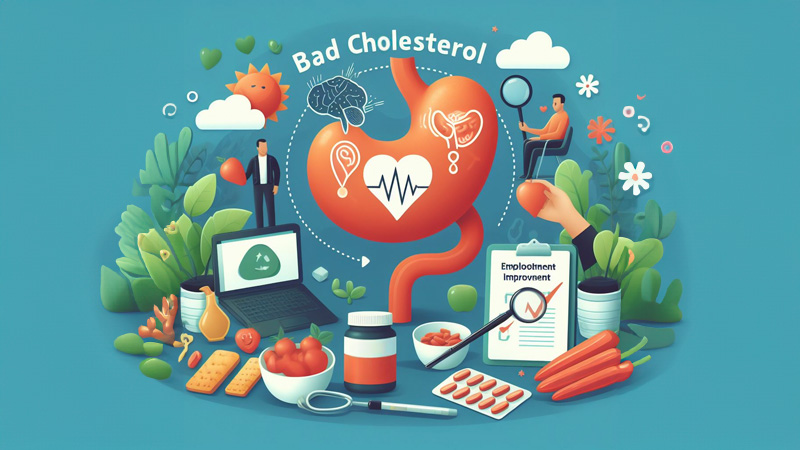

Comment